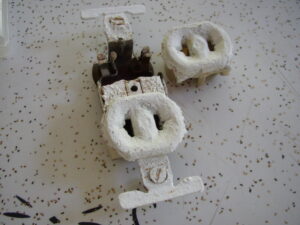I drilled through another top plate yesterday. Every time I drill through framing, there’s always this nagging worry that I’m drilling through the last bit of wood that’s keeping the house standing, and this hole is going to be the one that makes the whole house come crashing down into a big pile of rubble. So far, I’ve been lucky. But I still have to drill the bottom plate.. so I’m not out of the woods yet.
The good news is, I think I’ve found a cordless drill I’m happy with — the 12 volt DeWalt. I’ve never been a huge fan of the higher-voltage drills because they’re just too heavy and unwieldy for everyday around-the-house work. My old 9.6 volt drill was nice and light, but it lacked the torque to drive a paddle bit through a double 2×4 top plate. The new 12 volt handled it with flying colors, and it’s almost the same weight. For a weekend warrior like me, it seems to be the perfect balance between power and convenience.
